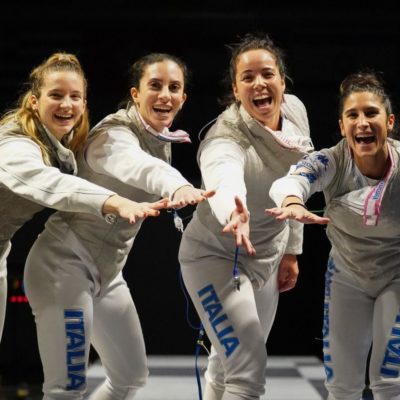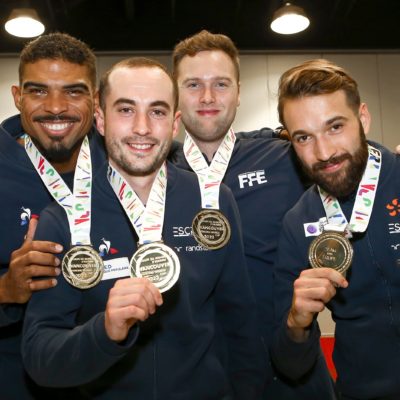As a referee what are you looking for to determine the attack when sabre fencers both start right from the command "fence"? In other words, what actions by the fencers create a true simultaneous call vs. an attack/counter-attack call. Are there tempo-stealing moves involved, is it a matter of "fastest out of the gate", or are there other factors?
Matt answers:
The most important thing is that a referee understand the footwork actions that earn priority when combined with the extending arm.
Being able to see the extending arm, as well as the footwork the fencer uses to deliver the attack, is very important. Forward movement without intention, even from the command "Fence," is not an attack!
Many times the "stealing of the tempo" in a four-meter situation is merely establishing a "firstness" of attack. For instance, many beginning referees have difficulty seeing the attack from the guard line when it is executed with advance-lunge versus the counter-attack executed with a lunge. Even if the lunges of both fencers land at the same time, the advance lunge would have started first, and should have priority.
The referee should not confuse speed of an attack with "firstness." One should also try to avoid being confused by a quick blade action that is executed into a long (one that develops outside of lunge distance) attack. If the blade action is executed into a pre-existing advance lunge attack, even if it lands first, it is always correct to award the priority to the advance-lunge attack. Of course, their are classic stop cuts, where the attacker hits their opponent literally "on the march," where one fencer extends to hit a fencer with a static blade.
The easiest way to expand your ability to see the attack in sabre, versus the counterattack, is to take a step or three back. A distance of about twelve to twenty feet is optimal- it puts both fencers, when on guard, within your field of vision. Most beginning referees stand too close to the strip to be able to see the five most important things when determining priority "off the line."
The 5 most important things to see for the sabre referee
- the weapon hand of both fencers
- the front knee of both fencers
- the scoring apparatus.
I try to focus on an imaginary rectangle, drawn between the guards of both fencers’ weapons, vertical to each fencers’ front knee, and horizontally between each fencers’ knee. If I’m able to see that rectangle, I can effectively referee the four meter situation. Without that field of focus, my window for a simultaneous action may be bigger, as my field of vision may focus too much on one athlete.
Matthew Cox is a Level 3 rated referee who can be found officiating at North American Cup (NAC) events. He is also coach at the Mid South Fencers Club (http://www.midsouthfencersclub.org/). In his competitive career, Matt has won the Pacific Northwest Sectional Championship, the Oregon State Games and North Carolina Divisional Sabre Championship several times.





